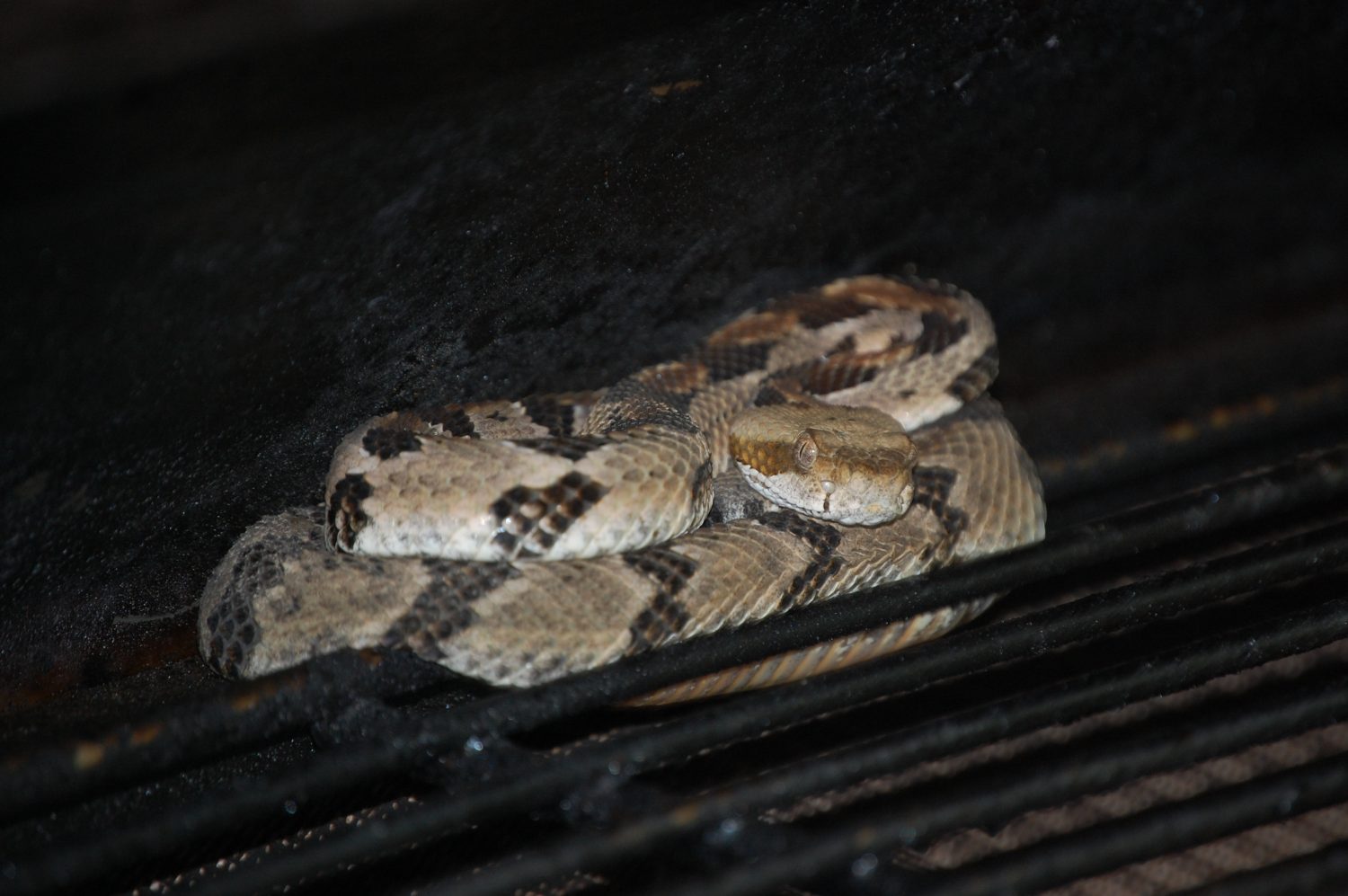Zieglers find small rattlesnake in outside grill
The young rattlesnake found curled up on the warming shelf of Rand and Marci Ziegler’s outdoor grill.
Not strangers to random encounters with wildlife, Baker professors Rand and Marci Ziegler were surprised at the appearance of a rare and dangerous reptile on the grill in their forested backyard.
“After I recognized what was sitting on the ‘warming shelf’ I literally jumped back away from the grill, more from surprise than fear,” Professor of Psychology Rand Ziegler said.
Back in June, when he went out to prepare his outside grill to cook that night’s dinner, Ziegler found a small timber rattlesnake curled up on the warming shelf inside the grill.
“At first, I didn’t know what kind of snake it was, or if it was dangerous,” he said. “I was just surprised … I’m not snake-phobic or anything but I’d rather be not-bitten than bitten. On the contrary, I thought this guy was really cool looking, cute even – I don’t think he was full grown.”
He immediately told his wife Marci, assistant professor of music, who took a few pictures of the snake and posted them to Facebook. Rand went to his computer and tried to research what kind of snake was occupying his grill.
“I had a sneaky suspicion at the time that it wasn’t a simple rat snake or other common harmless species,” he said. “Its rings around its body and its triangular-shaped head made me a bit nervous. After checking online, I was able to identify it as a timber rattlesnake.”
In his research, he learned that timber rattlesnakes are not common in the area and it is a protected species.
“Bad news for all the Facebook friends who told Marci and I to simply cook it,” he said.
Wondering about what to do with the snake, he decided to text fellow Baker professor Scott Kimball, assistant professor of biology, with pictures of the snake for his advice.
“I asked him if he could confirm my identification and then tell us what to do. He simply texted back, ‘Back away slowly,'” Ziegler said.
After, hearing from Kimball how tricky the removal process would be, the men decided that if the snake was there the next day, Kimball could come and see what he could do.
“We decided not to do anything until the next day in hopes that he would go away on its own, but he didn’t. So I got real brave the next morning and took pictures with my real camera. I kept getting closer and closer to the grill to get better and better photos. I figured if he (became) nervous or agitated, he would rattle its tail. He never rattled, so I kept trying to get closer photos. Probably not a great idea in retrospect. He was gone by that evening, and I actually felt a bit disappointed. Scott might not admit it, but I think he was deep-down hoping that he would get a chance to come do some rattler-wrangling, or snake-whispering.”
The responses to their Facebook post, Zieger said, were rather humorous.
“Some [comments] gave us removal advice, some told us to light the grill, cook it and eat it because rattlesnake tastes like chicken. Others said that they would have to move out of their homes forever if it had happened to them. My favorite responses were those that described me as brave or stupid for getting so close to take good photos.”
Since the snake’s disappearance, the knowledge of a dangerous snake close to home is a little unnerving to the Zieglers, especially concerning the safety of their dog Atticus.
“It wasn’t until the rattler was gone that I thought about being more anxious not knowing where it actually was,” he said.
The Zieglers have seen no more signs of snakes since then but will be a little more cautious in the future.
“Our house backs up to a wooded area, so we are used to seeing animals in our yard – raccoons, deer, ground hogs and now … venomous snakes.”







